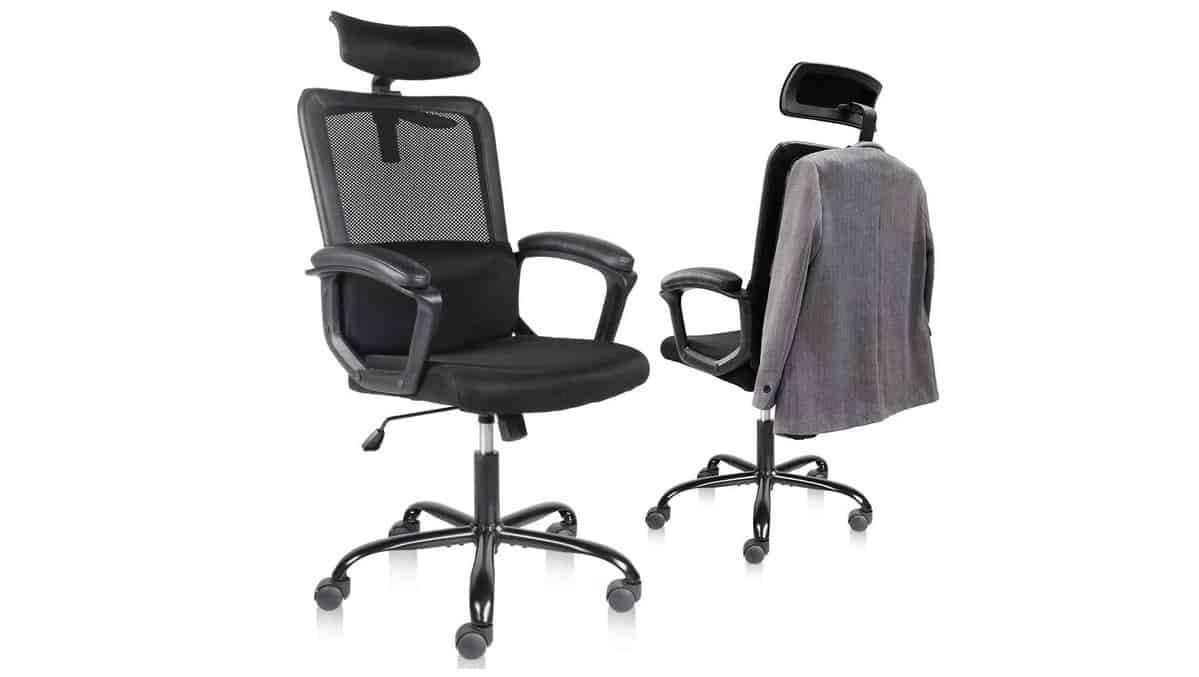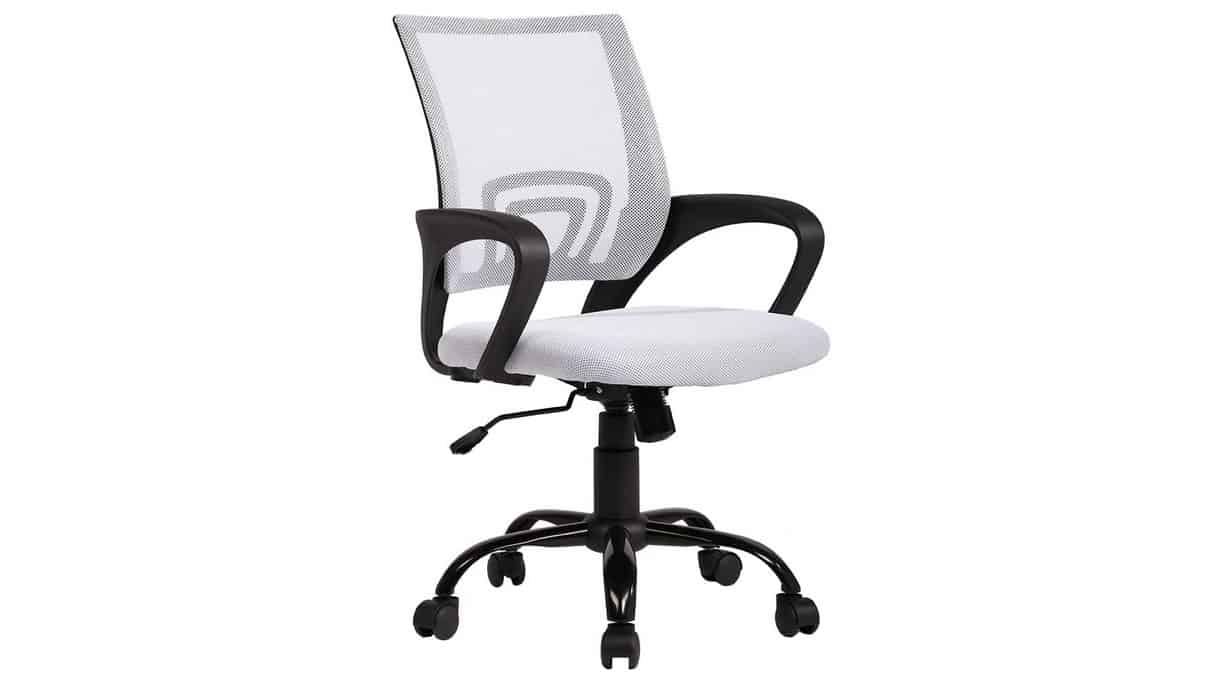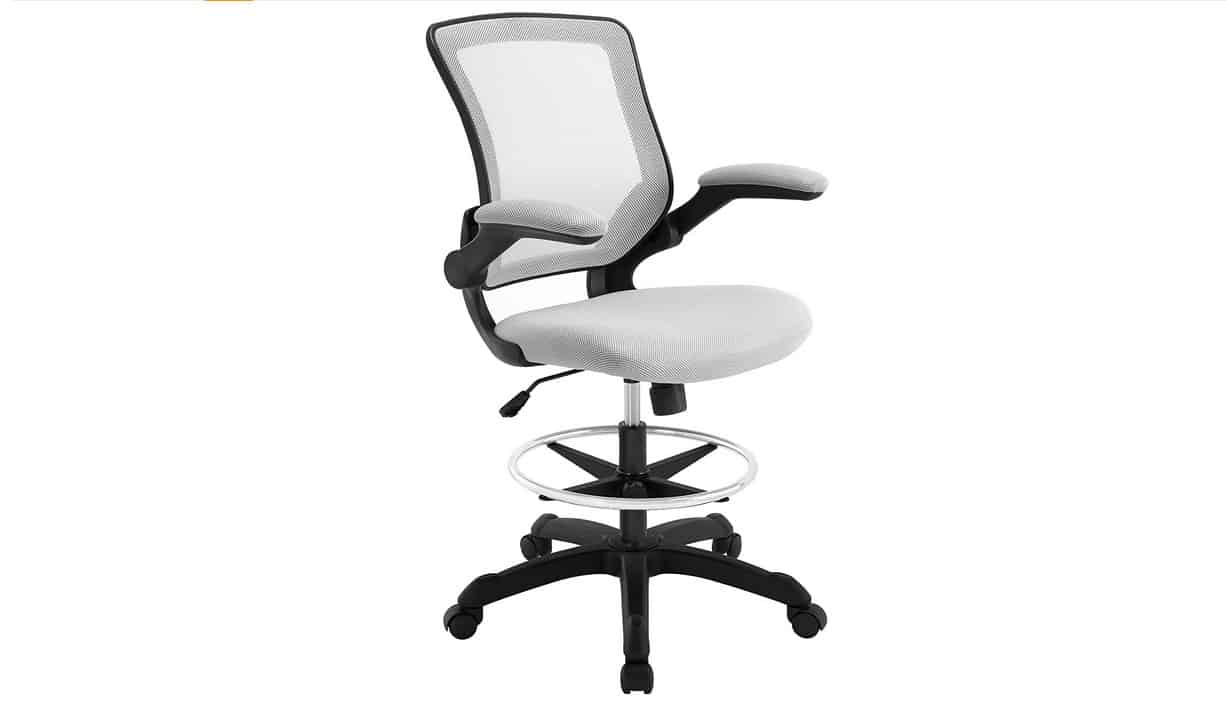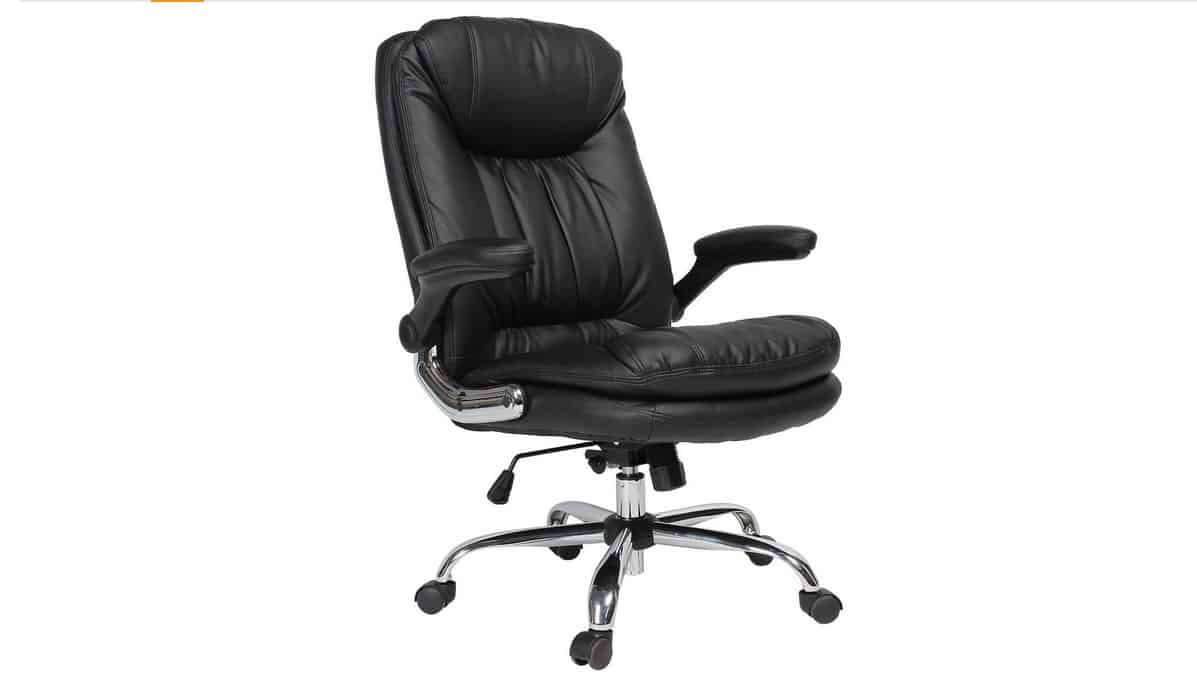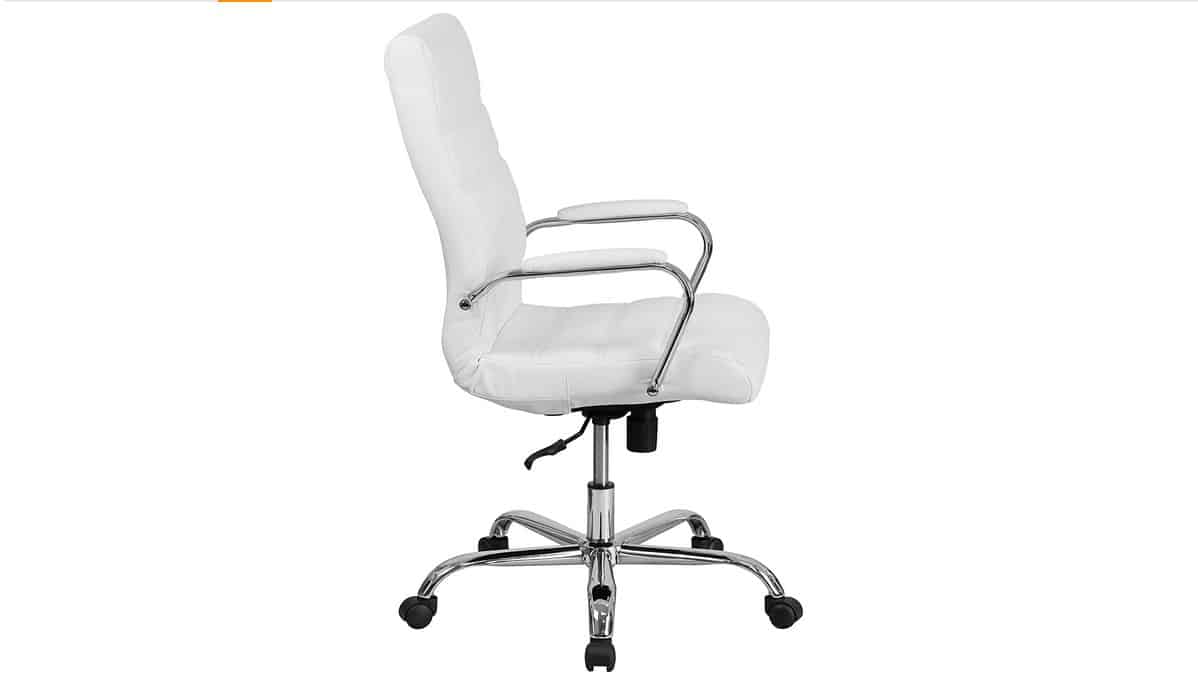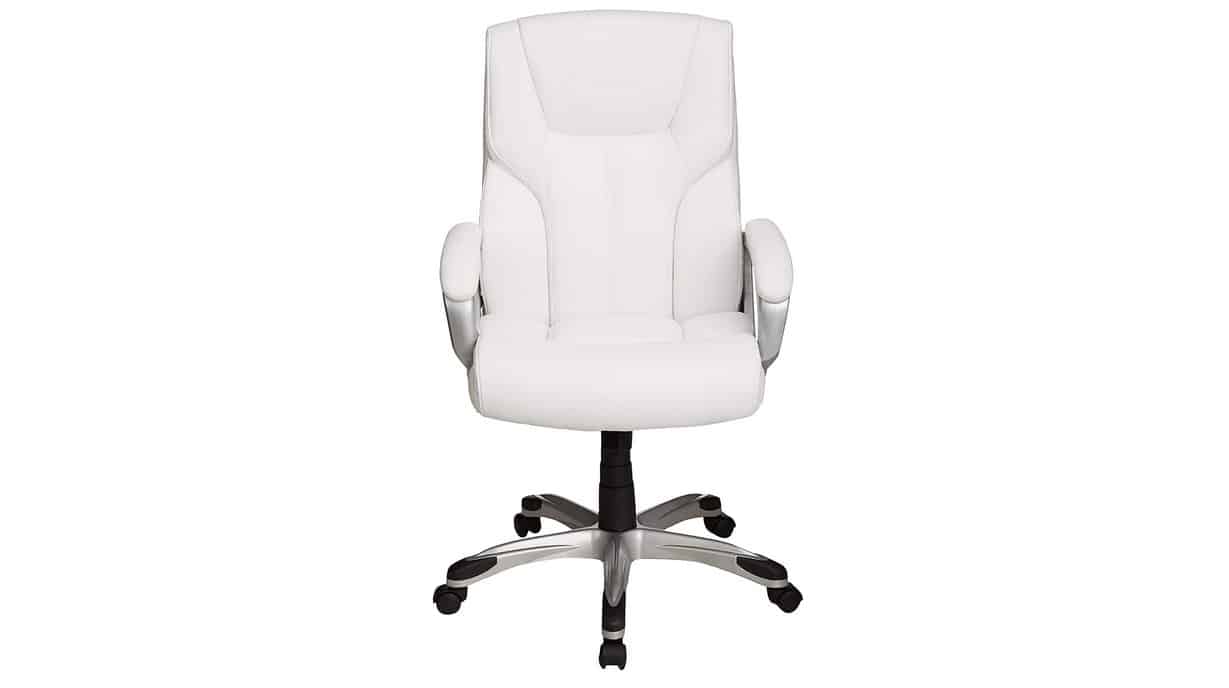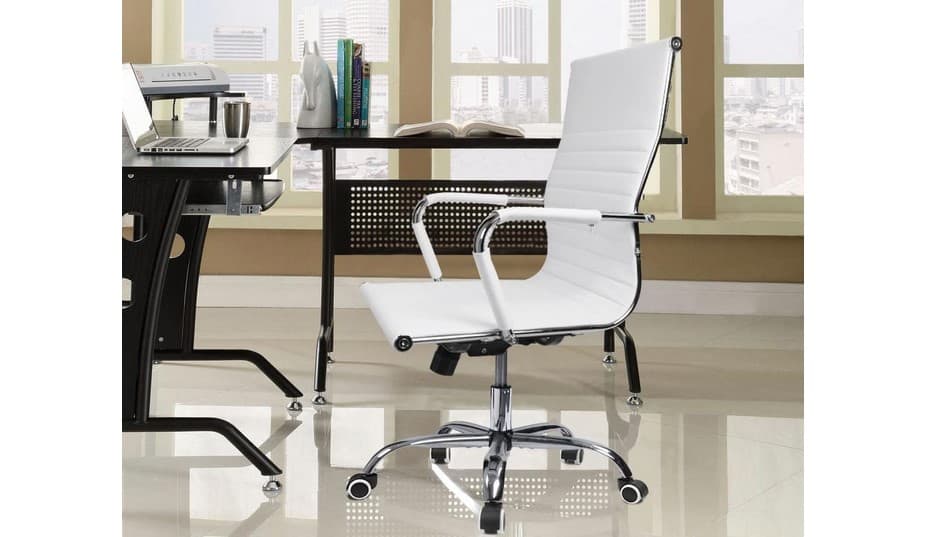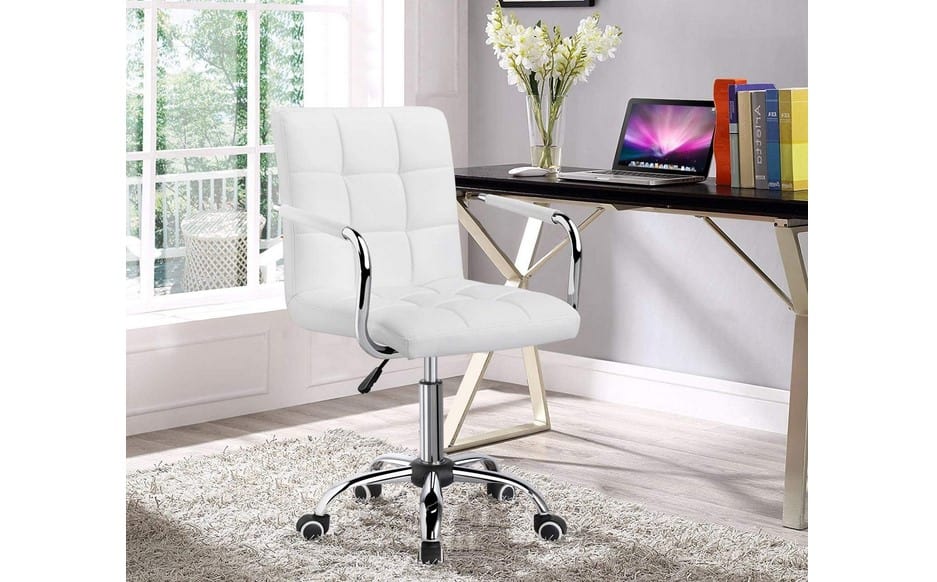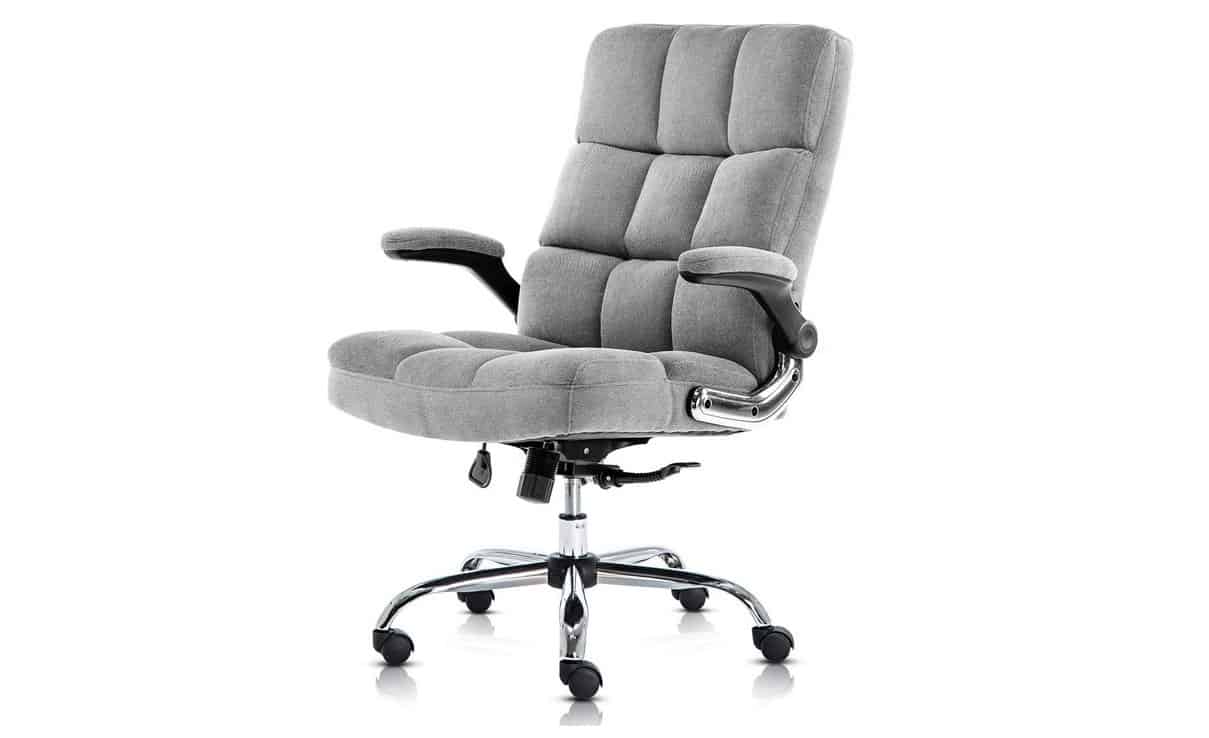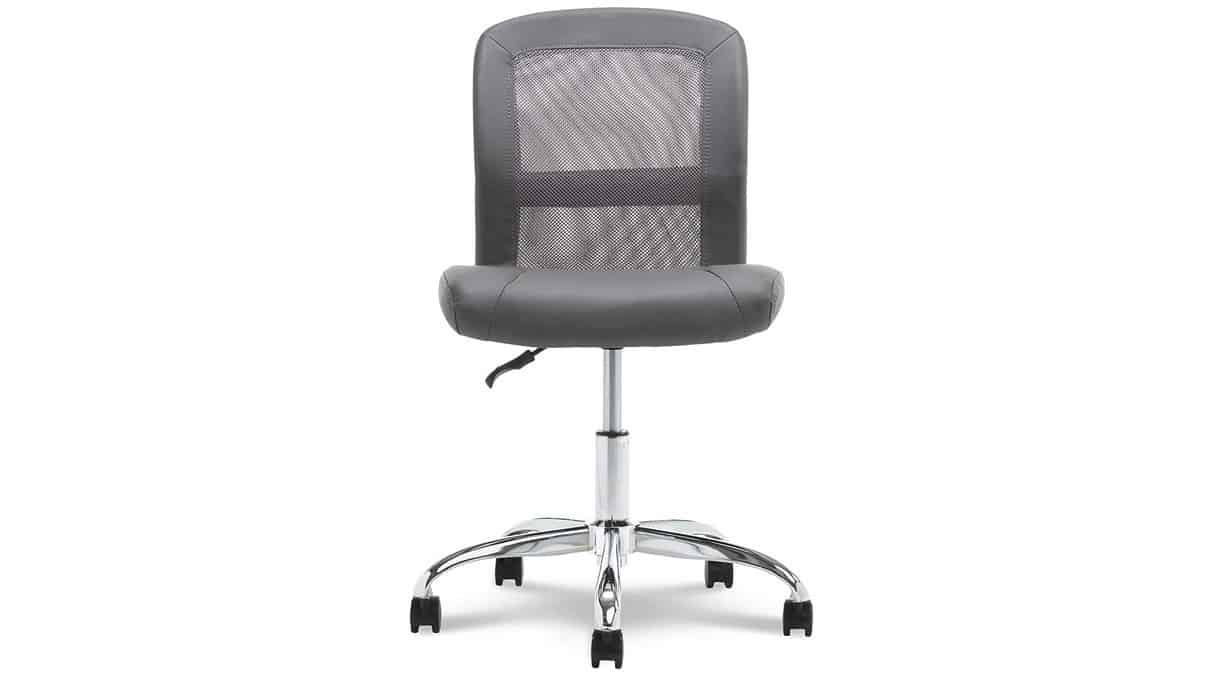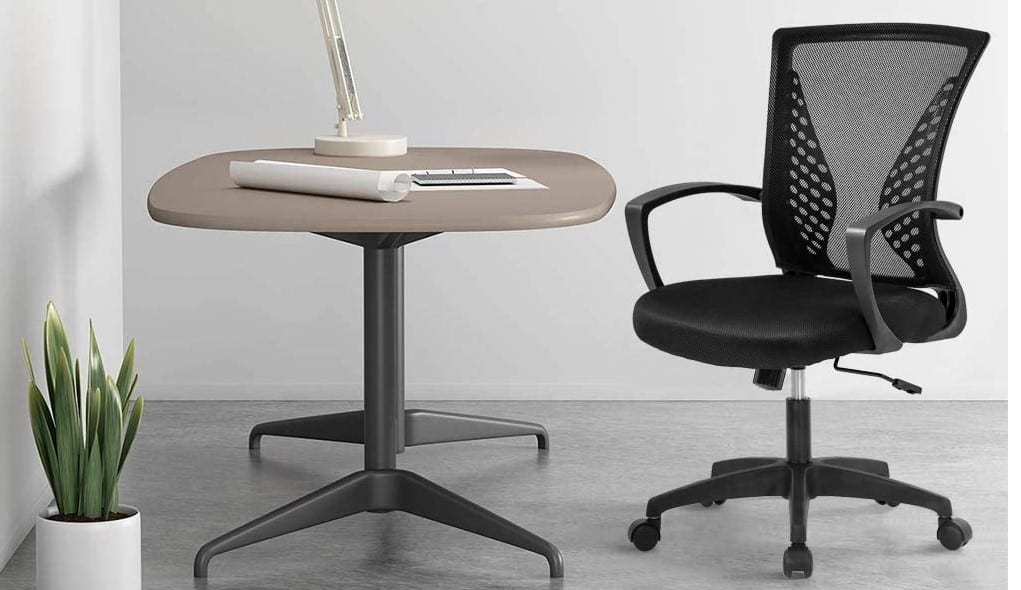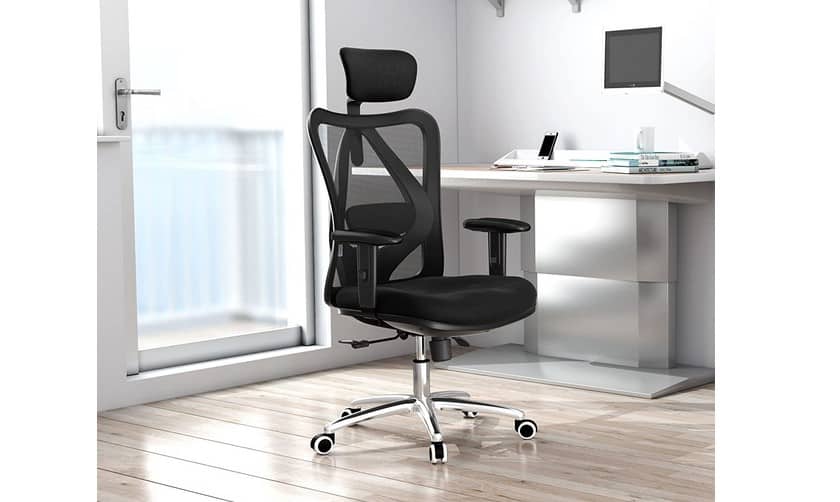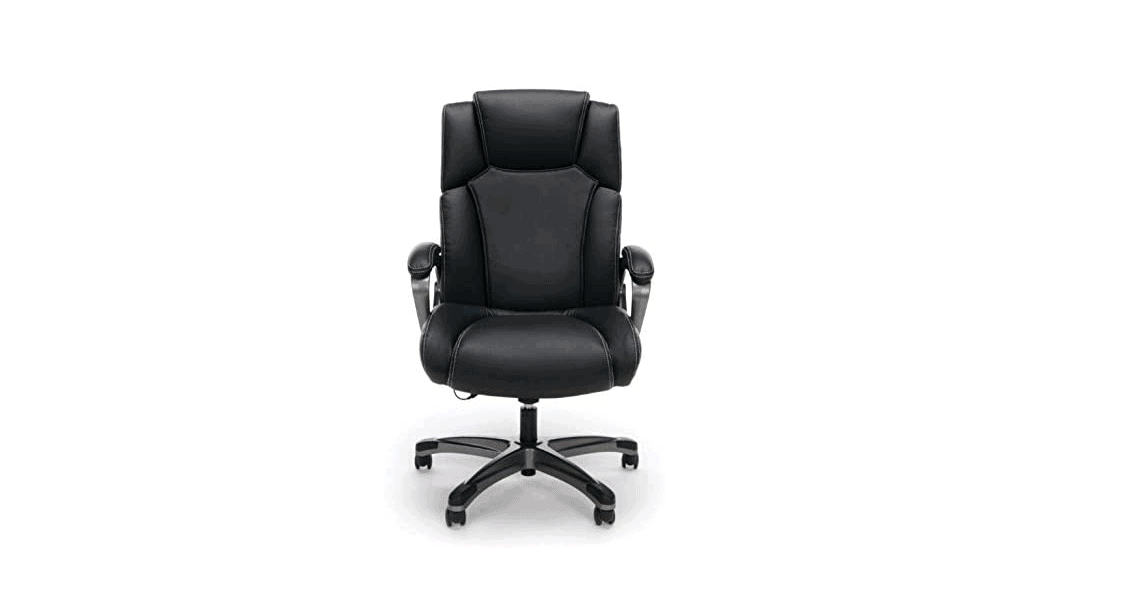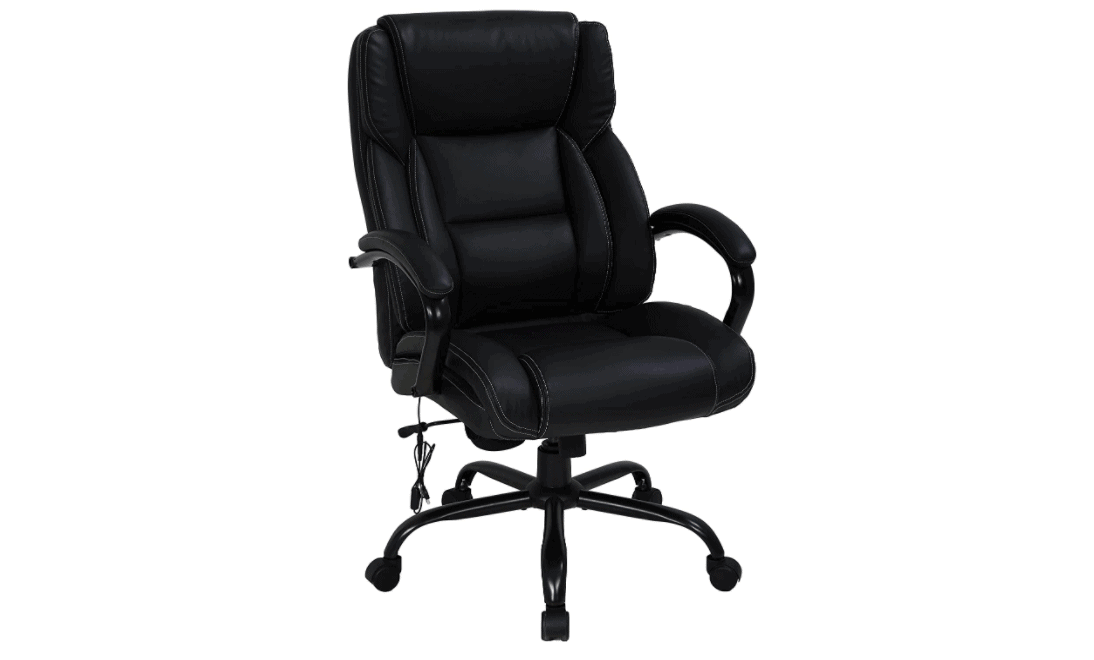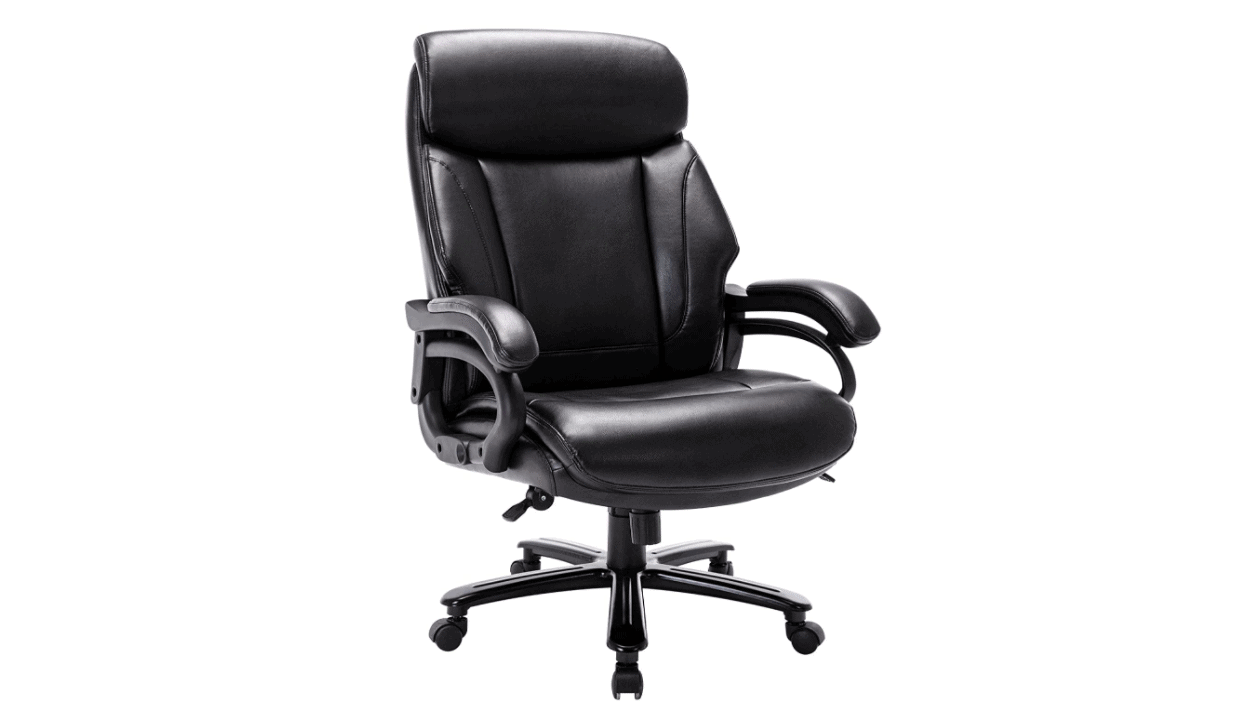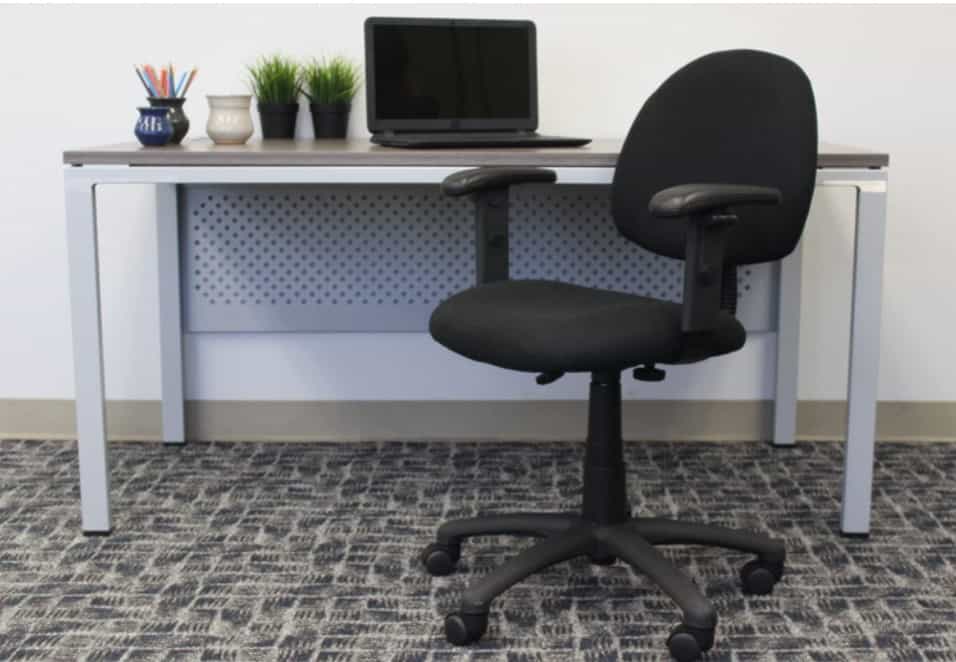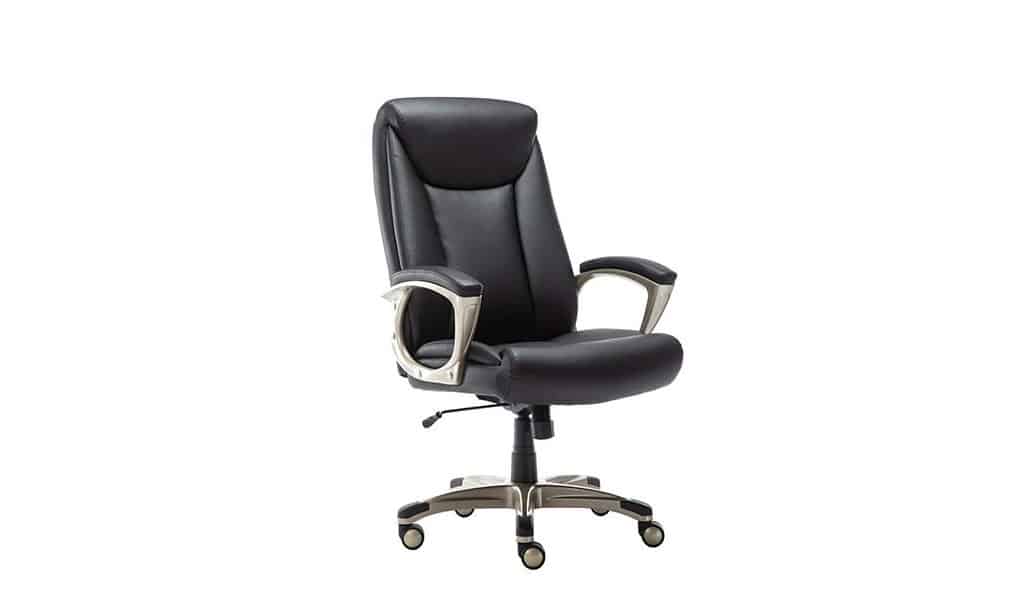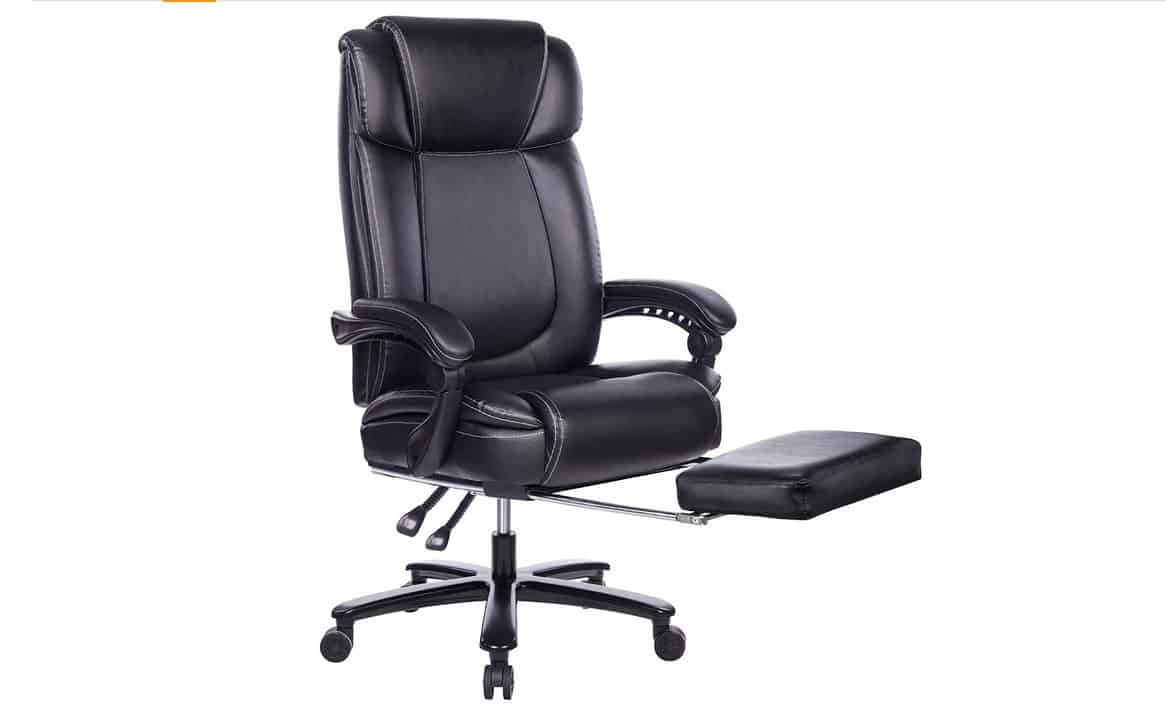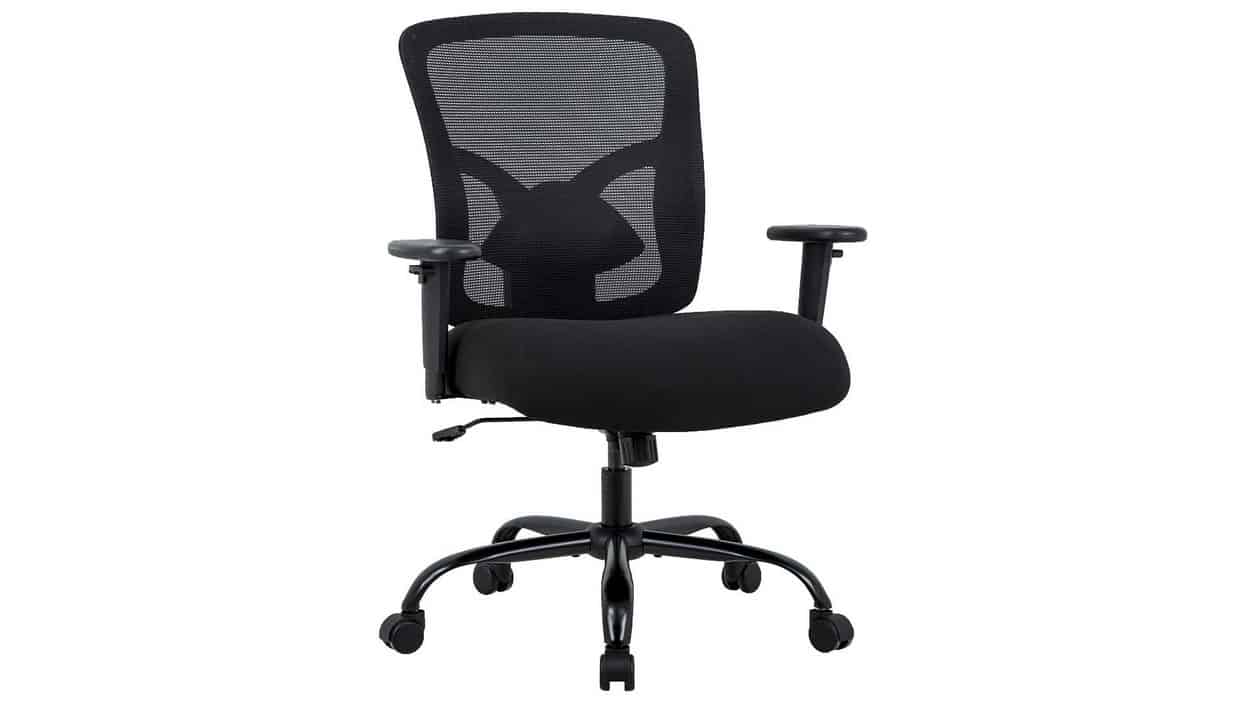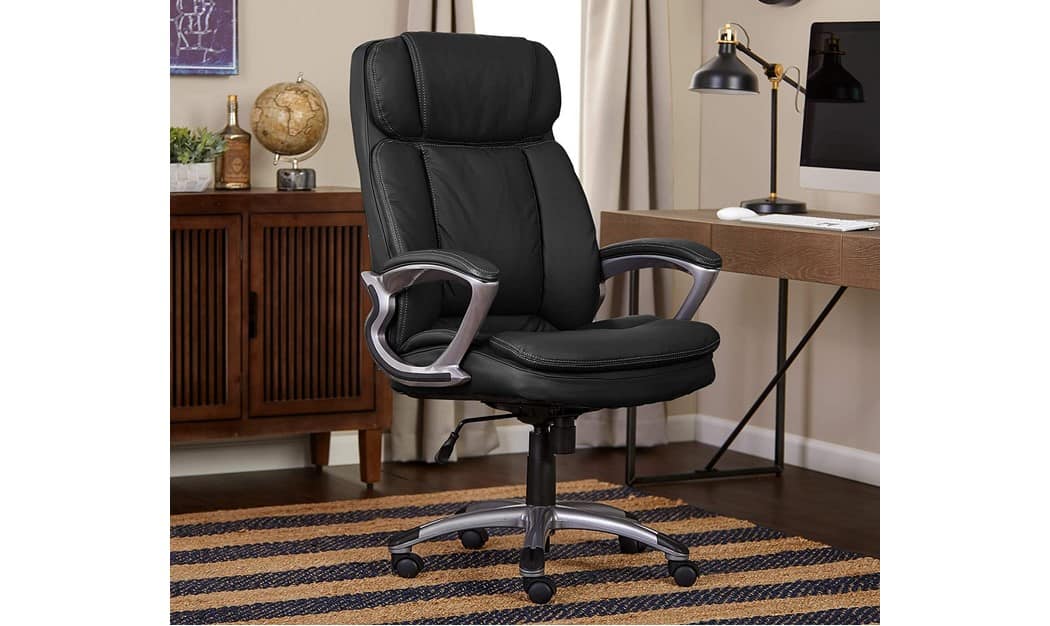Many people work in an office environment where they sit at a desk for extended periods. However, we know that sitting for long periods without taking periodic breaks can be a problem for our health. But along with all that sitting, poor posture — especially in your legs — can impede blood flow and increase the risk for circulatory issues. Learning how to maintain proper posture can help to eliminate those risks and reduce aches and pains over time. Keep reading to learn what is office chair bloof flow.
KEY TAKEAWAYS:
- Pick a chair with a waterfall seat edge to minimize pressure on the back of your legs
- Sit in a neutral position where your back is flush with the backrest of the seat
- Avoid sitting with your legs folded under you or crossed to prevent impacting blood flow
Ergonomics and Office Chair Blood Flow
Hands down, one of the best things you can do to maintain proper circulation when you’re seated is to pick a chair with proper ergonomic support. Specifically, you want a chair with a seat that features a waterfall edge. This is designed to reduce the amount of pressure placed on the back of your legs — a situation that can impact blood flow in your legs. If you have an old PU leather chair then you should repair your PU leather office chair as it works well to improve blood flow.
Pay Attention to the Seat
Along with a waterfall edge, your seat should be wide enough so that your legs can comfortably sit, side by side, without feeling pinched. Additionally, take advantage of the seat height adjustments so that you’re sitting comfortably with your feet flat on the floor and your legs bent at a comfortable 90-degree angle. You should know your office chair seat height if you wish to have a comfortable seating experience that improves your blood flow.
Related Post:
Posture Matters
Along with picking a chair that allows you to make necessary adjustments, the way you sit can also impact blood flow. You should have a chair that offers built-in lumbar support. But even with that feature, you need to sit in a neutral position so that your back is naturally straight, and especially so that your lower back is flush with the back of your office chair.
Keep Your Legs Down
As tempting as it might be to sit with your legs folded under you or crossed, don’t do it. Your feet should be comfortably flat against the floor. If they’re dangling off the edge of the seat this can create poor blood flow and over time, encourage swelling or varicose veins.
Related Posts:
Take a Break from Sitting
Posture and a proper chair are important. But sitting for extended periods is bad for you all around. Along with the mini-break it provides, taking breaks to stand up and walk around also helps to get your heart pumping and the blood flowing. The activity can also help to prevent blood from pooling in your legs.
F.A.Q.
Can a chair cut off circulation?
Yes, a chair can cut off circulation if it places too much pressure on the back of your legs. This is especially true if you’re sitting for extended periods.
How can I improve circulation at my desk?
A few good ways to improve circulation would be to invest in a standing desk and to take periodic standing or walking breaks throughout the day.
How should you sit in an office chair?
You should sit so that your feet are flat on the floor with your knees in line or slightly lower than your hips. You should maintain proper posture so that your spine maintains its natural curve with your chair at a 100 to 110-degree angle.
STAT: Sitting for prolonged periods, especially without proper posture, fatigues the muscles and compresses the blood vessels responsible for supplying the muscles with blood. (source)
Certain sitting positions may also reduce blood flow, according to a 2015 study Diagnosis A doctor can diagnose circulation problems and any underlying issues that may be causing them. (source)
REFERENCES:
- https://www.livestrong.com/article/227977-how-to-sit-to-increase-circulation/
- https://www.spine-health.com/blog/9-ergonomic-tips-synchronizing-your-work-station-and-office-chair
- https://www.ncbi.nlm.nih.gov/pmc/articles/PMC4974853/r
- https://www.ccohs.ca/oshanswers/ergonomics/sitting/sitting_overview.html
- https://vitalrecord.tamhsc.edu/healthy-legs-preventing-circulation-problems-on-the-job/















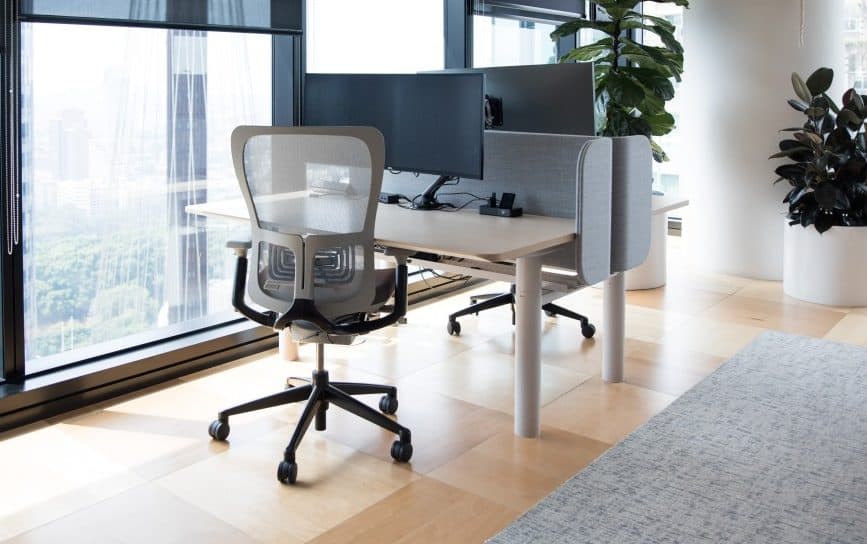
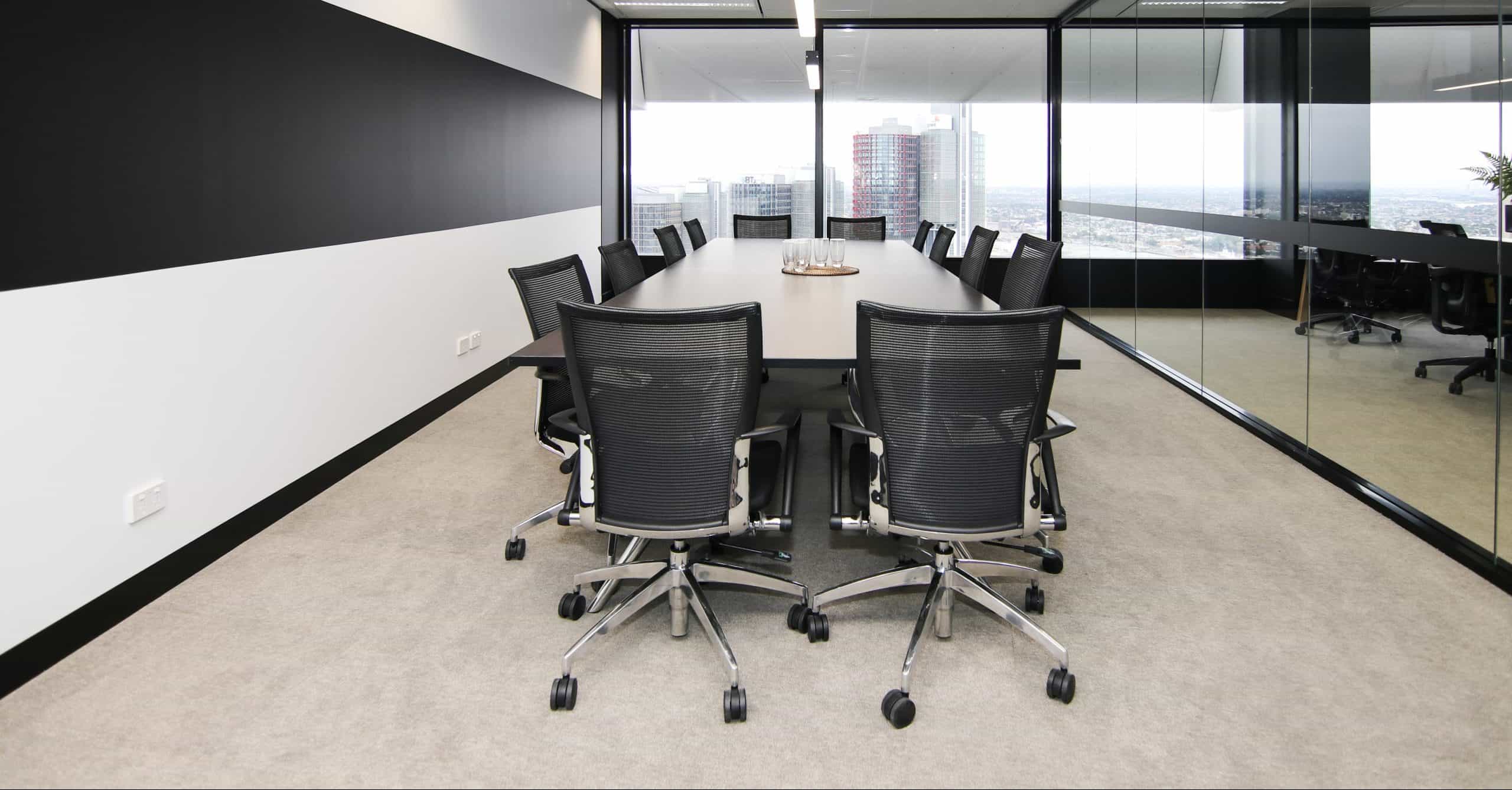
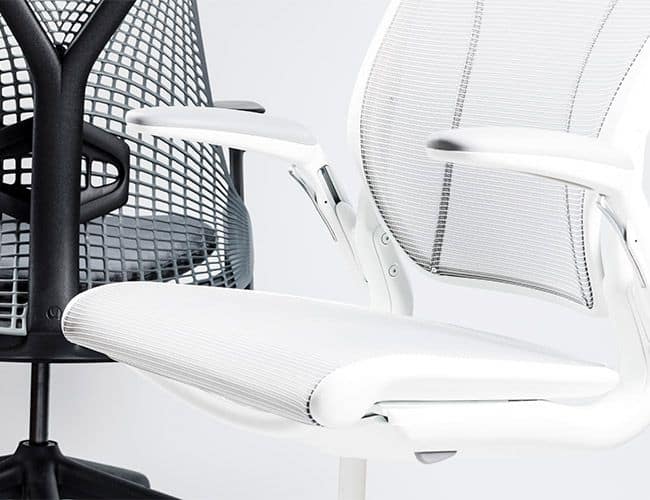
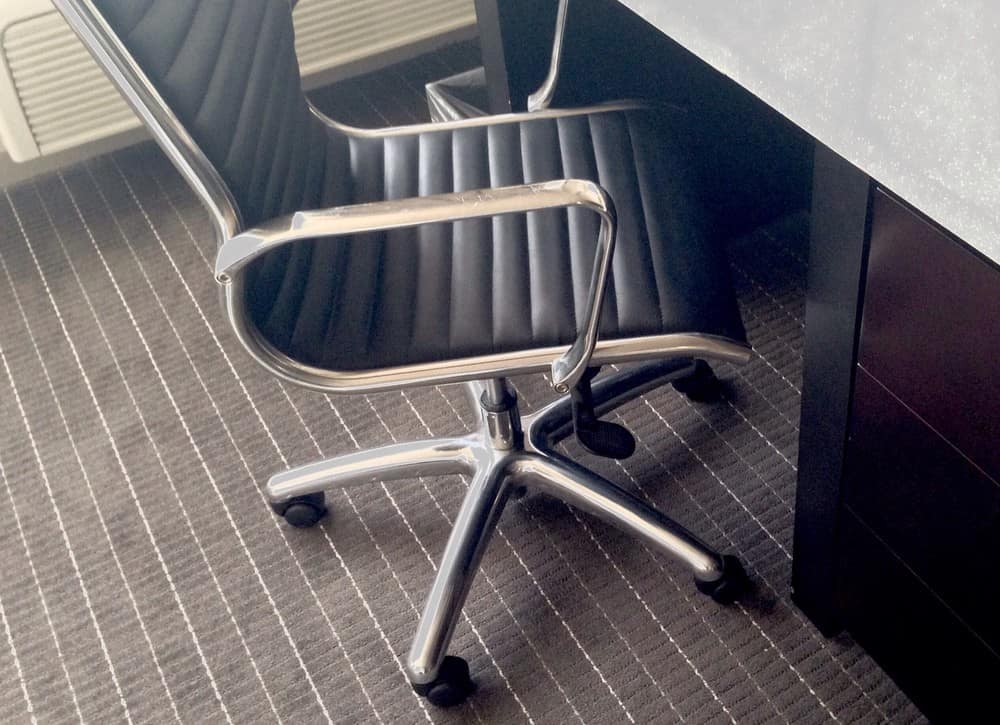

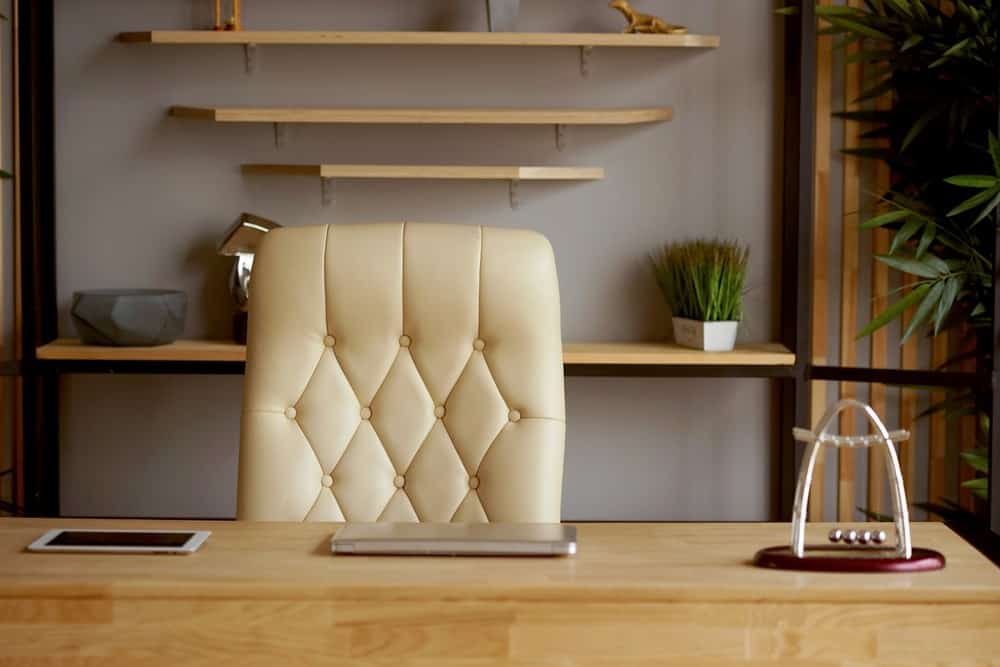
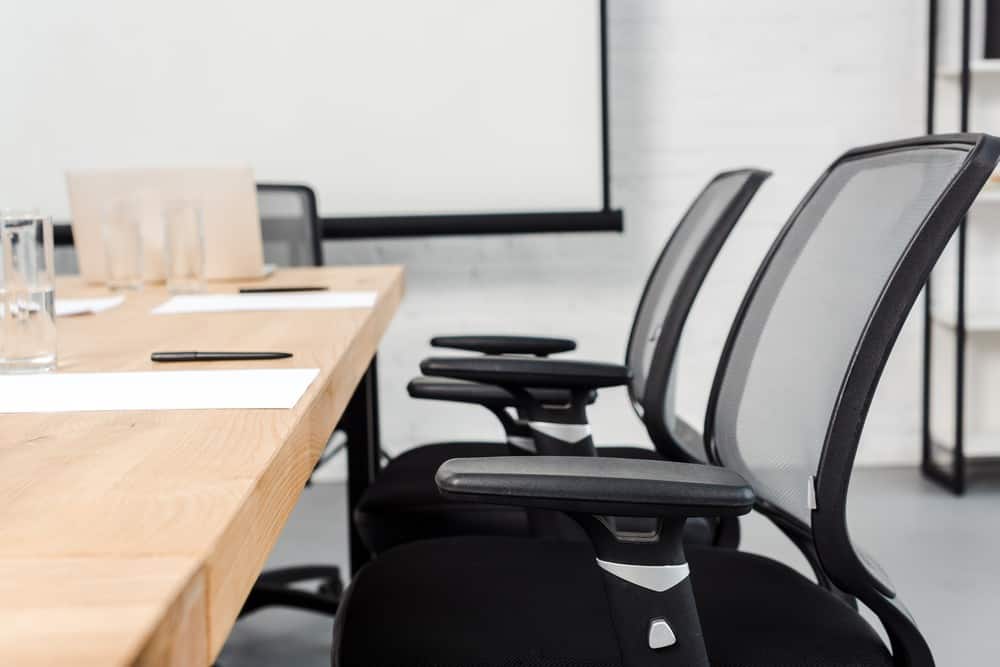


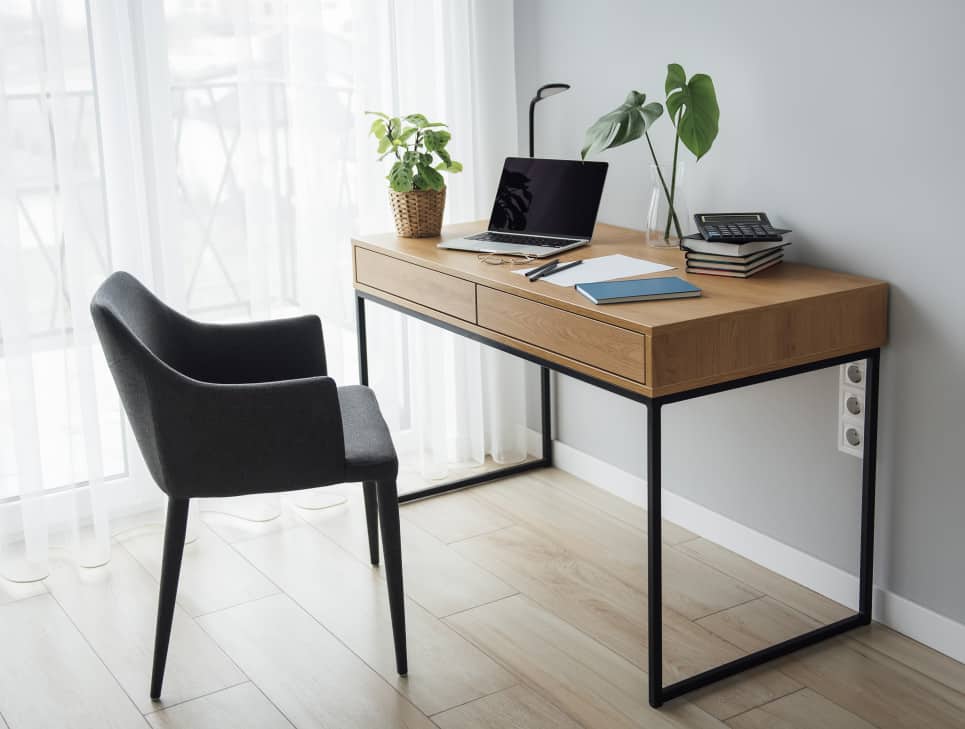
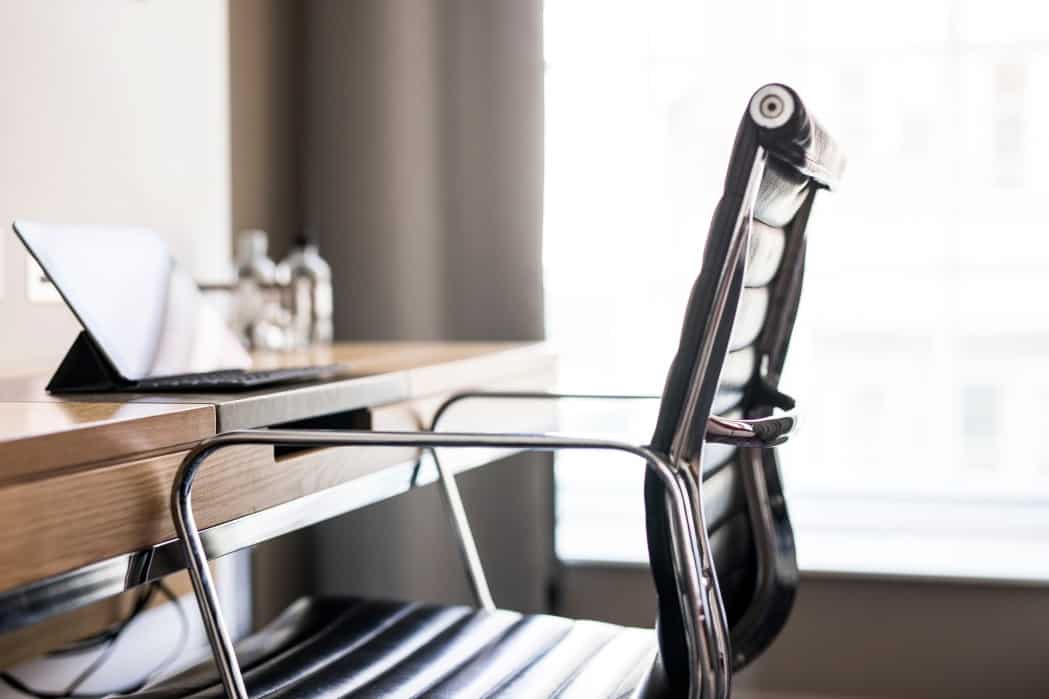



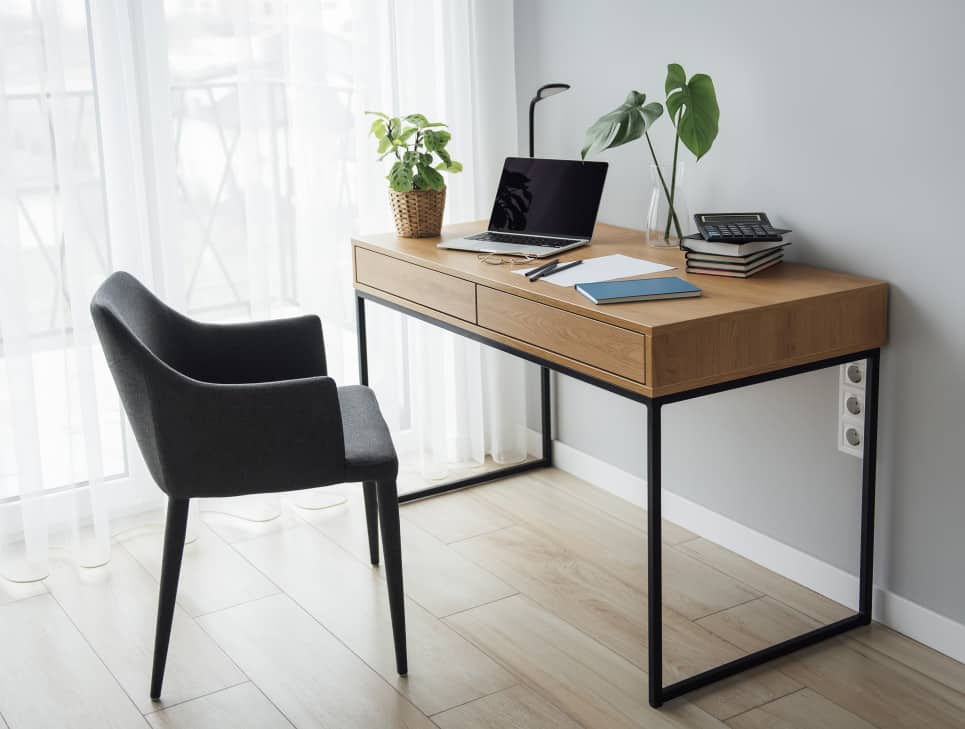


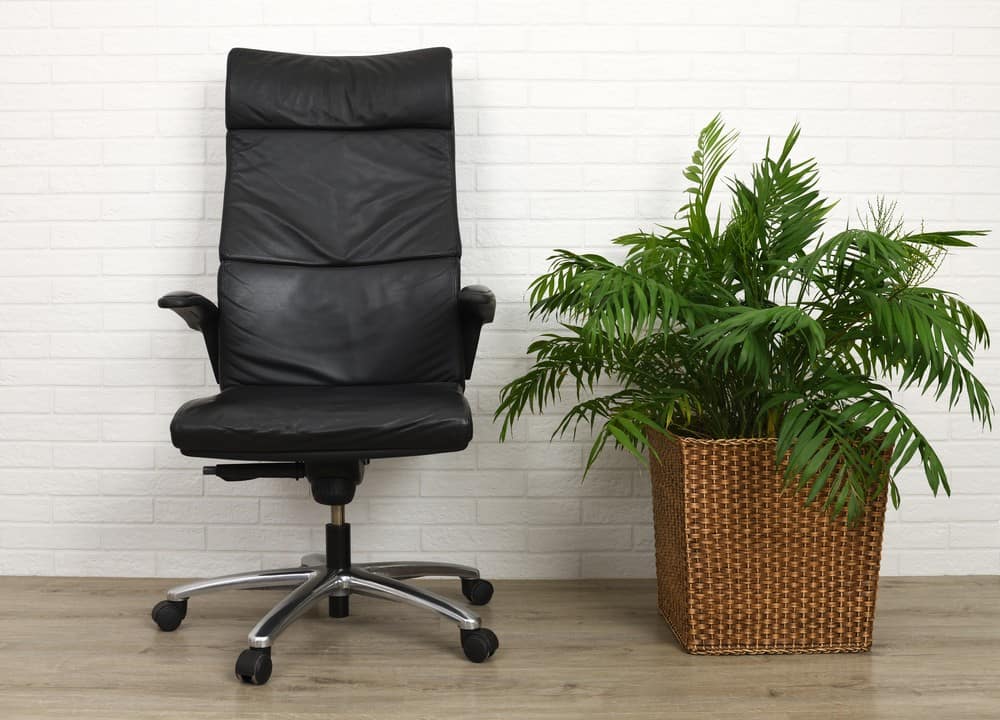

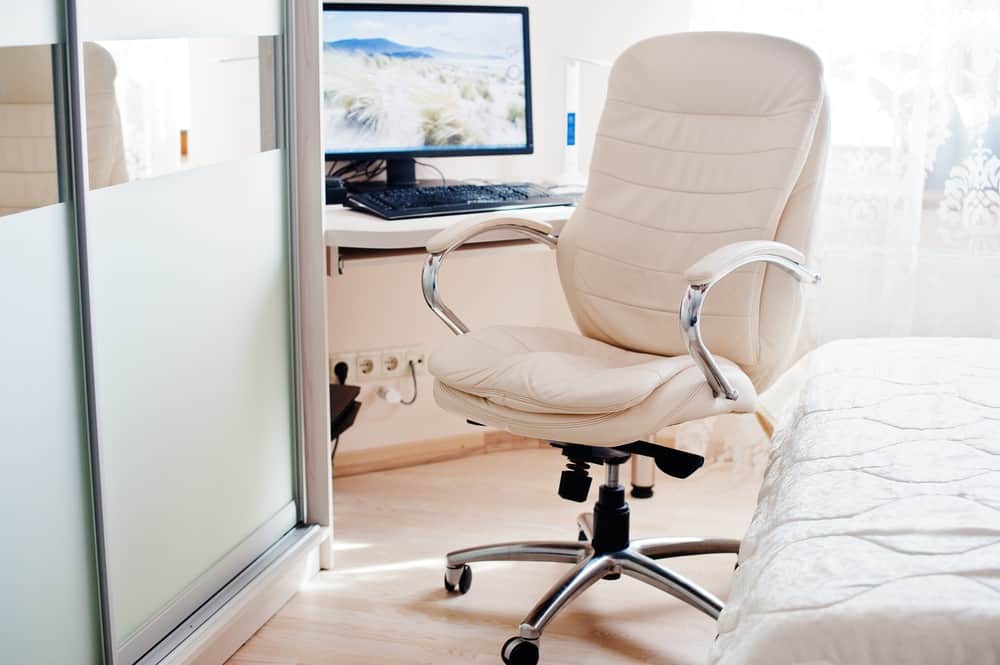
![Best Office Chair in [year] ([month] Reviews) 27 Best Office Chair in 2026 (January Reviews)](https://www.gadgetreview.dev/wp-content/uploads/best-office-chair-image.jpg)
![Best Office Chairs for Sciatica in [year] 28 Best Office Chairs for Sciatica in 2026](https://www.gadgetreview.dev/wp-content/uploads/best-office-chair-for-sciatica-image.jpg)
![Best Office Chairs for Hip Pain in [year] 29 Best Office Chairs for Hip Pain in 2026](https://www.gadgetreview.dev/wp-content/uploads/best-office-chair-for-hip-pain-image.jpg)
![Best Chairs for Programmers in [year] 30 Best Chairs for Programmers in 2026](https://www.gadgetreview.dev/wp-content/uploads/best-chair-for-programmers-image.jpg)
![Best Haworth Office Chairs in [year] 31 Best Haworth Office Chairs in 2026](https://www.gadgetreview.dev/wp-content/uploads/best-haworth-office-chairs-image.jpg)
![Best Wooden Office Chairs in [year] 32 Best Wooden Office Chairs in 2026](https://www.gadgetreview.dev/wp-content/uploads/best-wooden-office-chairs-image.jpg)
![Best Humanscale Office Chairs in [year] 33 Best Humanscale Office Chairs in 2026](https://www.gadgetreview.dev/wp-content/uploads/best-humanscale-office-chairs-image.jpg)
![Best Herman Miller Office Chairs in [year] 34 Best Herman Miller Office Chairs in 2026](https://www.gadgetreview.dev/wp-content/uploads/best-herman-miller-office-chairs-image.jpg)
![Best Steelcase Office Chairs in [year] 35 Best Steelcase Office Chairs in 2026](https://www.gadgetreview.dev/wp-content/uploads/best-steelcase-office-chairs-image.jpg)
![Best Leather Office Chairs in [year] 36 Best Leather Office Chairs in 2026](https://www.gadgetreview.dev/wp-content/uploads/best-leather-office-chairs-image.jpg)
![Best Fabric Office Chairs in [year] 37 Best Fabric Office Chairs in 2026](https://www.gadgetreview.dev/wp-content/uploads/best-fabric-office-chairs-image.jpg)
![Best Hon Office Chairs in [year] 38 Best Hon Office Chairs in 2026](https://www.gadgetreview.dev/wp-content/uploads/best-hon-office-chairs.jpg)

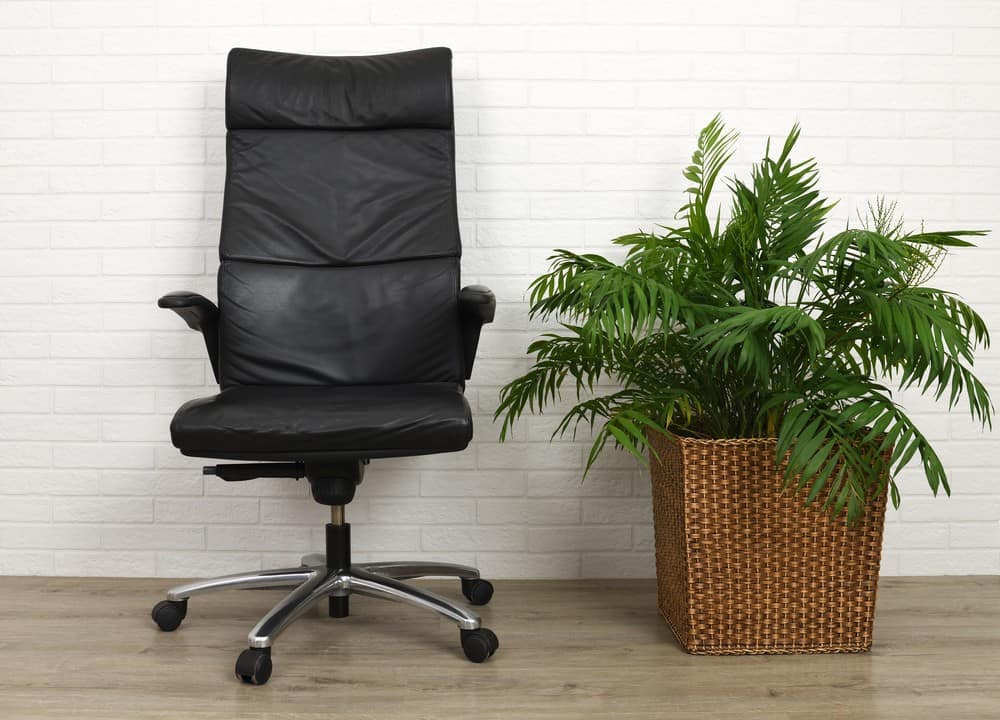
![10 Best Mesh Office Chairs in [year] 41 10 Best Mesh Office Chairs in 2026](https://www.gadgetreview.dev/wp-content/uploads/Best-Mesh-Office-Chair.jpg)
![10 Best High Back Office Chairs in [year] 42 10 Best High Back Office Chairs in 2026](https://www.gadgetreview.dev/wp-content/uploads/Best-High-Back-Office-Chair.jpg)
![10 Best White Office Chairs in [year] 43 10 Best White Office Chairs in 2026](https://www.gadgetreview.dev/wp-content/uploads/Best-White-Office-Chair.jpg)

![Best Office Chair Under $300 in [year] ([month] Reviews) 45 Best Office Chair Under $300 in 2026 (January Reviews)](https://www.gadgetreview.dev/wp-content/uploads/chair-lower-back-pain.jpg)
![10 Best Drafting Chairs in [year] 46 10 Best Drafting Chairs in 2026](https://www.gadgetreview.dev/wp-content/uploads/best-drafting-chair.jpg)
